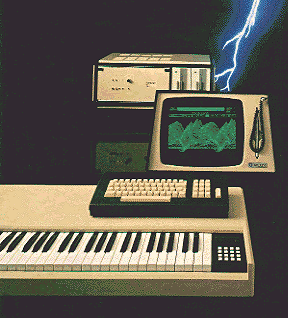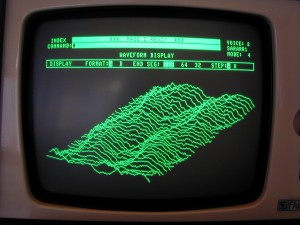Fairlight app
 The Fairlight app, regular version
The Fairlight app, regular version
Anyone being casually interested in making synthesizer based music in the 80s have probably dreamed of owning and using a Fairlight. A complete workstation with sampling and synthesizing sonic capabilities, hugh sound library, muliti timbral, pattern and song sequencing, total recall, all in one computer and controlled by a light pen resembling of a miniature lightsaber. Only issue was that it costed as much as a house. A nice house. You could even have to add the garage. And a car.
Now fast forward 30 years and you can get all those features and capabilies for close to free if you happen to have a computer, a midi keyboard and Internet access. That’s progress for you. Still, the concept defined by the Fairlight inventors still applies apart from the lightsaber… the all integrated computer based workstation with a huge sound library still rules.
Last week the empire striked back and released the first Fairlight software only product in shape of an IOS app. It’s available in the Apple App Store for iPhone and iPad for 9.99USD, or in whatever currency you have. But unlike many other app developers that have a free or light version AND a full version in the App store, Fairlight have a only one version in the store. The uppgrade to the Pro version (as they call it) is only available from within the App itself. And the price for the Pro version is 39USD. It’s a bit of an easter egg approach.
The regular version gives you alot of vintage feel in terms of whirling floppy disc noise, load waiting time and 500 accurate sounds from the original Fairlight library including Orch 2 hits, Ahhhs and glass crash. Also the the original GUI using pages is used and fit’s like a glove in the IOS world. But from the original 20 pages the IOS app leaves you with 6 pages.
Once started you are confronted with a menu of 5 pages where one tells the history of the Fairlight. Head over to Wikipedia or Holmes page to get the full story though.
Page 2 and 3 is about loading sounds and combining them but as you can’t create or edit combinations (called instruments) page 3 is meaningless in the regular version. So what you can do is to browse though the library and load one sound at a time and then play it from the one octave keyboard. It’s here thing gets too limited, though. You get not only just one octave of keyboard to use, but it’s only from C to C. You can select which octave but is have to start with a C! This makes it hard to play just anything but tinkle little star. To load you own sounds you have to upgrade to the Pro version which I havn’t tried yet.
You do get the famous R page sequencer but you only have 2 demo songs to play – no edits, no save, no load. And the cool looking page D to inspect the waveform landscape is not only hard to use as you have to tilt the iPhone and keeping it still is kind of hard – but it’s kind of meaningless as you can’t load you own samples and you can’t loop the ones you get with the library. Looping is disabled. And the whole point of page D is to match the sample rate to the sound frequency to find good loop points.
Conclusion
The regular version of the Fairlight app I would call demo version. You can’t really use it in a musical context as it’s too limited. What you get is an app demonstrating the classic Fairlight library, however made with love and care it’s only a novelty app. Unless you are prepared to buy the pro version don’t expect to make any music with this app.
As I still feel a bit ripped off, I havn’t bought the Pro version but I guess I will once calmed down. What’s worring though is that although with the Pro version you can load your own samples via email or iTunes you cannot record them directly via the mic. Also the synthesizer side of the Fairlight CMI like drawing waveforms and harmonic profiles is not included in the Pro version either.
The history page in the app sais that “the app is as powerful as the first Fairlight CMI” but I really don’t agree. This is more like the marketing deparments ploy trying to find customers for the new CMI-30A. And the CMI-30A cost you ….like a house, a nice house. And the garage. And a car. Now, where’s my lightsaber!



